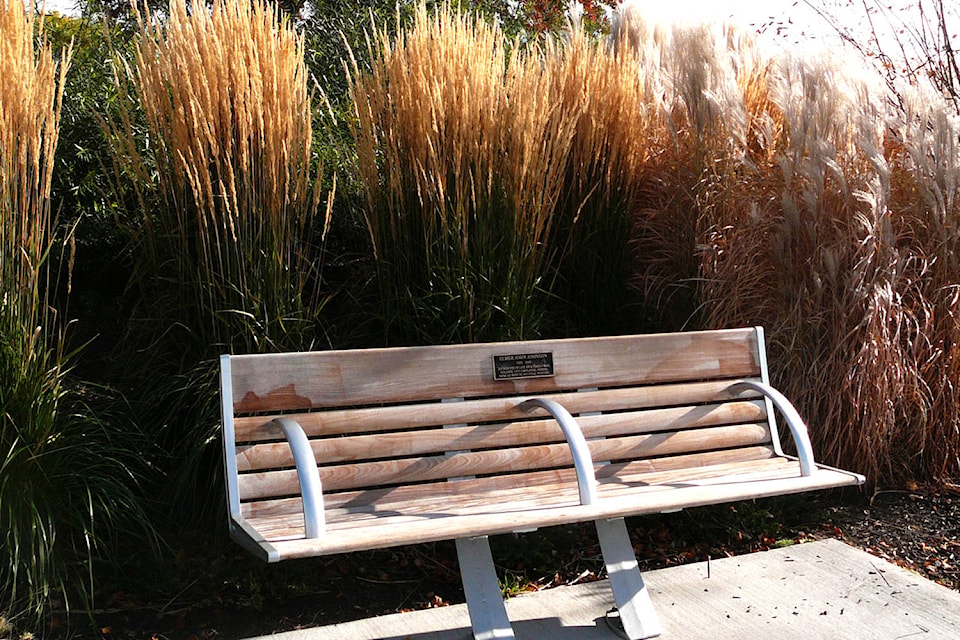I love being in the garden in autumn.
The air is cooler and gentle, birds sing joyfully while feasting on seeds, many species of pollinators are busy getting ready for winter, and leaves are beginning to turn vibrant fall colours.
The garden can be stunning with late-blooming and long-blooming plants. They are enhanced when eye-catching, fall-blooming ornamental grasses form the backdrop.
Here are some of my fall favourites:
Caryopteris (blue mist shrub) is a wonderful, low-water shrub. A favourite of pollinators it�㽶��Ƶֱ���s covered in tiny blue flowers from August to frost.
Caryopteris �㽶��Ƶֱ���Dark Knight�㽶��Ƶֱ��� has the deepest blue flowers, complementing silver leaves of this compact 5 x 5 foot shrub.
Sulphur yellow blooms of native rabbitbrush (Ericameria nauseosus) brighten our dry grasslands from mid August to late September. With silver, needle-like foliage, it�㽶��Ƶֱ���s outstanding all season and a great addition to dry, sunny gardens.
Another great dry garden performer is Sedum �㽶��Ƶֱ���Autumn Joy�㽶��Ƶֱ���. Easy to grow and propagate, it has excellent, glaucous foliage all season. Buds begin green in early August, opening pink, deepening to red and going rust in October. Wait until spring to cut them down as they look wonderful in frost and snow.
Many varieties of annual sunflowers and red amaranth are spectacular until frost and provide winter seeds for birds.
Anemone �㽶��Ƶֱ���Robustissima�㽶��Ƶֱ���, the drought tolerant variety of Japanese anemone has pink flowers and a vigorous habit. Dry conditions and lean soil slow its growth.
Attractive mounds of maple-like leaves are topped by masses of fall bloom. It�㽶��Ƶֱ���s most drought-tolerant in a shady garden.
Although not as drought-hardy, the following sun-loving perennials will grow with moderate to low water:
Fall is synonymous with chrysanthemums. There are many variations in height, colour and bloom time from mid-summer through to late fall.
Fall asters are in their glory in September, however they only bloom for about three weeks so I prefer to grow Aster frikartii. It has masses of yellow-centred blue daisies from July to frost and does not require dead-heading.
Another July to frost bloomer is Gaillardia �㽶��Ƶֱ���Burgundy�㽶��Ƶֱ���. The deep-red daisies provide a vivid contrast to almost any other colour. It needs dead-heading for repeat bloom.
Equally long-blooming, Rudbeckia �㽶��Ƶֱ���Goldsturm�㽶��Ƶֱ���, provides a golden show. Prominent black seed heads look great in winter, and feed birds.
More drought-tolerant Rudbeckia hirta varieties bloom from July to frost. They are grown as annuals but generally re-seed abundantly.
My favourite ornamental grasses are the fall-blooming Panicum virgatum varieties, Miscanthus varieties and Saccharum ravennae. The golden seed heads of June blooming Calamagrostis �㽶��Ƶֱ���Karl Foerster and Deschampsia �㽶��Ƶֱ���Goldtau�㽶��Ƶֱ��� compliment the fall garden.
Visit Stuart Park, to see some mass plantings of grasses. Ornamental grasses are low maintenance and combine well with mass plantings of the above mentioned perennials.
To learn more come to OXA�㽶��Ƶֱ���s �㽶��Ƶֱ���Introduction to Xeriscape�㽶��Ƶֱ��� workshop: Saturday, Sept. 23 from 10 a.m. to 2 p.m. in Kelowna or Oct. 14 in Penticton. Details and registration are on the OXA website:
Gwen Steele is executive-director of the non-profit Okanagan Xeriscape Association.



